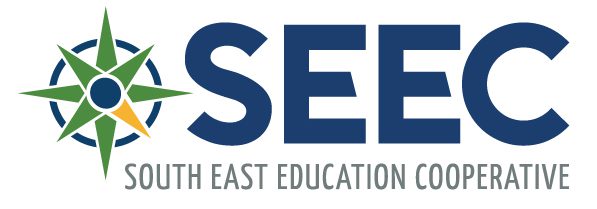“Increas(ing) students who demonstrate reading proficiency in 3rd grade” is one of six goals in North Dakota’s Prek to Grade 12 Education Strategic Vision Framework. Momentum towards this goal has continued to build over the past three years bolstered by funding provided by the U.S. Department of Education for the $28.8 million Striving Readers Comprehensive Literacy Grants (2017-2021) and will continue through 2024 through the $43.9 million Comprehensive Literacy State Development grant.
While not all schools were recipients of these funds, the focus on helping all ND students reaching proficiency by grade 3 remains. North recently announced members of the State Literacy Team which is comprised of a cross-section of professionals with experience from birth through higher education.
The State Literacy Team will meet annually to update the North Dakota Comprehensive Literacy Plan and to provide guidance on literacy-related topics. SEEC’s Kerri Whipple has been named to the team and will be bringing her breadth of experience from PreK, K-3 Reading Corps and LETRS to the team.
SEEC is working with school districts, state leaders, legislators, parent advocates and higher education educators to ensure that all stakeholders are in agreement with ensuring that pre-service and in-service educators are given the knowledge and tools they need to effectively teach all learners to read.
Internally, we are consistently doing our due diligence to ensure we understand the research to find strong evidence-based programs, strategies, resources, etc. to deliver to our members via a variety of professional learning opportunities as well as embedding into our student programming.
A couple shared items to bring to you this month are below:
Tackle Reading Difficulties Using Data and Instruction Based in the Science of Reading
(ASCD, Illuminate Education, Fastbridge)
- In this playbook, reading experts share how assessments and differentiated support that target the five core reading skills ensure all students – including English learners and students with word-reading difficulties such as dyslexia – become successful readers.
Comparing Reading Research to Program Design: An Examination of Teachers College Units of Study
(Achieve the Core)
For the last 40 years, scientists have studied how our brains turn abstract symbols, or letters, into words — in short, how we learn to read. We now know that traditional balanced literacy practices do not include enough explicit or systematic instruction on the word recognition half of the Reading Rope to equitably teach all students to read. To prevent the unnecessary pain of reading failure, many educators are turning to the science of reading for guidance.


Leave a comment